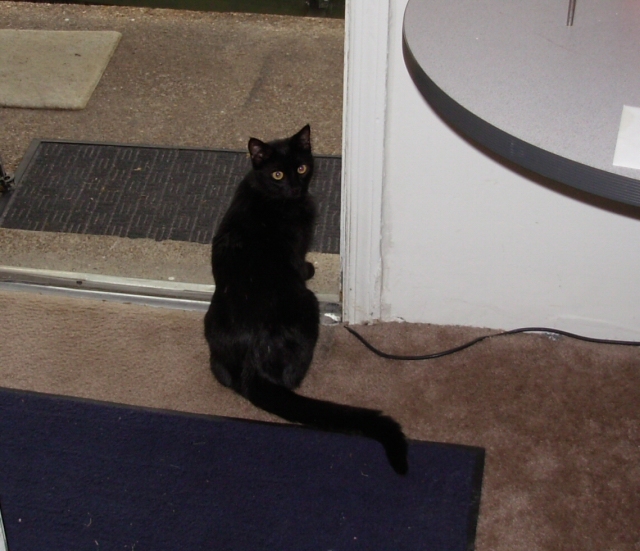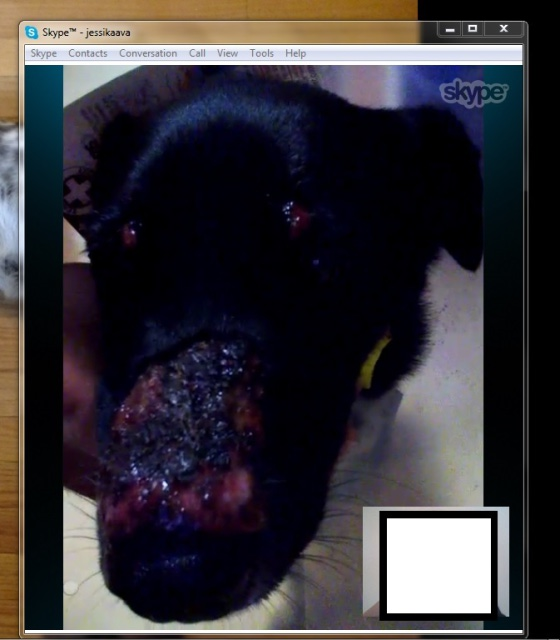Questioncould you tell me more about parvo and exactly what it is.We just lost our
little dog from it.We haven't had him very long- I'd say at least 2 months
maybe less,hadn't got around to getting his shots and noticed that he was
very ill this morning.He wasn't eating or drinking water- very lethargic
and when my husband took him to the vet nearby, they said that he had
parvo and didn't know if IV treatment would've saved him because he was
too far gone.Sadly they had to put him to sleep.Our kids are sad & so are
we- if you could send some imfo about this desease,I'd be greatful.We have
another older dog that was vaccinated last year in September- should we be
concerned that he also might get the parvo? and should we also get him
more shots if needed?
thanks for your help
AnswerParvo is a totatlly preventable disease with the appropriate vaccines. I would recommend boostering your older dog to be safe and also disinfect everything with bleach. Here is more info on parvo ....
Canine parvovirus type 2, canine parvoviral enteritis
Parvo
AffectedAnimals:
Dogs. Doberman pinschers, rottweilers, pit bulls, English springer spaniels, and Labrador retrievers are especially susceptible.
Overview:
A highly contagious viral illness that usually affects young puppies, parvovirus is transmitted from one dog to another via the infected animal's feces. Parvovirus works by temporarily destroying the lining of the intestinal tract so that very little or no food or liquid can be absorbed. As a result, dogs that become infected with parvovirus may experience bloody diarrhea, severe vomiting, weight loss, and fever. In addition, because parvovirus also affects the immune system, limiting it from producing the white blood cells that protect against infection, dogs with the virus may develop other diseases.
It is rare for an adult dog more than two years of age to get sick from parvovirus. Rather, puppies are the most severely infected by the disease, and without appropriate medical attention, they may not survive the illness. However, there is a vaccine against parvovirus that should be given to puppies as a series early in their lives, and repeated every year thereafter. With appropriate medical attention, most of these dogs will survive, but the cost of treatment is much more expensive than the cost of proper vaccination. In addition, keeping the environment free of feces can deter the spread of parvovirus, as feces can remain infective within grounds for several months.
Clinical Signs:
Clinical signs include diarrhea that may contain blood, vomiting, depression, anorexia, dehydration, weight loss, abdominal discomfort, and sometimes fever with sepsis, or bacteria within the bloodstream. The diarrhea sometimes will be absent for the first 24 to 48 hours of illness. Bloodwork results may reveal a neutropenia, or low numbers of white blood cells, and hypoalbuminemia, which is a decreased amount of a protein called albumin within the blood.
Symptoms:
See clinical signs.
Description:
Parvovirus is known clinically as canine parvovirus type 2. Because antibodies against the disease from the mother begin to decline when the puppy reaches six to 16 weeks of age, younger dogs that have not been vaccinated against the disease are at a greater risk for severe infection.
Parvovirus is transmitted when a dog ingests the feces of another dog that has the infection and is shedding the virus in its feces. Once within the animal's system, the virus typically causes clinical signs to develop five to 12 days after infection. The virus then spreads throughout the dog's system, destroying all of the rapidly dividing cells, including white and red blood cells, which are produced in the bone marrow, and cells within the intestines that absorb and digest food and fluids.
The virus causes the animal to become very sick from complications such as secondary bacterial infections and severe dehydration. Animals will also have diarrhea that may contain blood, vomiting, and fever. Supportive and aggressive medical care will often save the animal, but the cost of medical treatment is much greater than the cost of protecting the dog with appropriate vaccines. Without immediate medical attention, a dog can die from parvovirus.
Diagnosis:
Often, diagnosis is suspected based on the history and physical exam findings. A complete blood count, which measures the number of white blood cells, red blood cells, and platelets, often will show an insufficient number of white blood cells. A parvovirus test, performed using a fecal sample, shows the presence of the shedding virus in the feces. Occasionally, a false negative result can occur if the virus has not yet begun to shed in the feces; thus, dogs that test negative often are re-tested if the veterinarian suspects parvovirus.
Prognosis:
For puppies that receive medical attention and survive the first two or three days of treatment, the prognosis is good to excellent. Puppies between the ages of six to 18 weeks that do not receive treatment have a poor prognosis for survival. Older animals have a better prognosis than puppies and tend to require a briefer period of hospitalization. Ultimately, however, the prognosis is dependent on the individual animal's immune system and the degree of illness.
Transmission or Cause:
Parvovirus is transmitted from an infected dog to another dog most commonly through the fecal-oral route. The virus is shed in the feces typically for two weeks following infection. However, once the virus is within the environment, it can remain infective for months. Highly contagious, parvovirus can infect any dog that enters a contaminated area and has not had proper vaccinations. Some dogs do not develop symptoms of parvovirus; instead, they are carriers of the disease, shedding infective feces for a year or more.
Treatment:
The treatment of parvovirus is supportive care because there is no cure. Fluid therapy, usually given intravenously at a veterinary hospital, is critical in preventing dehydration and replacing fluids lost through vomiting and diarrhea. Animals typically are hospitalized and kept on fluid therapy for several days, until they are able to hold down water and food. Food and drink should not be given for 24 to 72 hours to allow the intestines time to recover. Fluids given under the skin can be beneficial as well, but there is a risk of tissue damage and cell death, or necrosis and infection through repeated skin injections.
A veterinarian usually will give the dog antibiotics to prevent infection due to bacteria. Antiemetic medications, beneficial in preventing nausea and vomiting, may be given as well. Antacids can be given to prevent damage to the esophagus from vomiting acidic fluids. With quick, aggressive medical therapy, the majority of animals survive.
Prevention:
The best prevention is proper sanitation of the environment and vaccination of young puppies. Vaccines should be given at six, nine, 12 and 16 weeks of age. Because they are more susceptible to parvovirus, certain breeds such as Doberman pinschers, rottweilers, pit bulls, English springer spaniels, and Labrador retrievers will need an additional vaccine again when they are 20 weeks of age.
Even when vaccines are administered properly and according to schedule, animals may become infected by parvovirus if they live within a contaminated environment. Because antibodies from the mother can inactivate the vaccine until the puppy is 16 to 18 weeks of age, preventing contact with infected animals or contaminated environments is critical. The use of dilute bleach (1:32) will kill the virus and is an effective cleaning agent. Always use cleaning products in well-ventilated areas. Keep all infected animals in strict isolation and prevent transmission of fecal material from one area to another.

 Cat with yellow eyes
Question
eyes
A friendly white female cat has recently
Cat with yellow eyes
Question
eyes
A friendly white female cat has recently
 labor in dogs
QuestionQUESTION: My female pomapoo went into labor aro
labor in dogs
QuestionQUESTION: My female pomapoo went into labor aro
 Excessive Consumption
Question
Tiny - About 12 months
Hello,
Background:
I h
Excessive Consumption
Question
Tiny - About 12 months
Hello,
Background:
I h
 Giant Blisters/Scab on Nose & Spreading
Question
Dogs Snout and Eye
Hello,
We have take
Giant Blisters/Scab on Nose & Spreading
Question
Dogs Snout and Eye
Hello,
We have take
 Tailed Manx Kitten docking tail?
QuestionQUESTION: Hello,
I got tailed manx kitt
Tailed Manx Kitten docking tail?
QuestionQUESTION: Hello,
I got tailed manx kitt